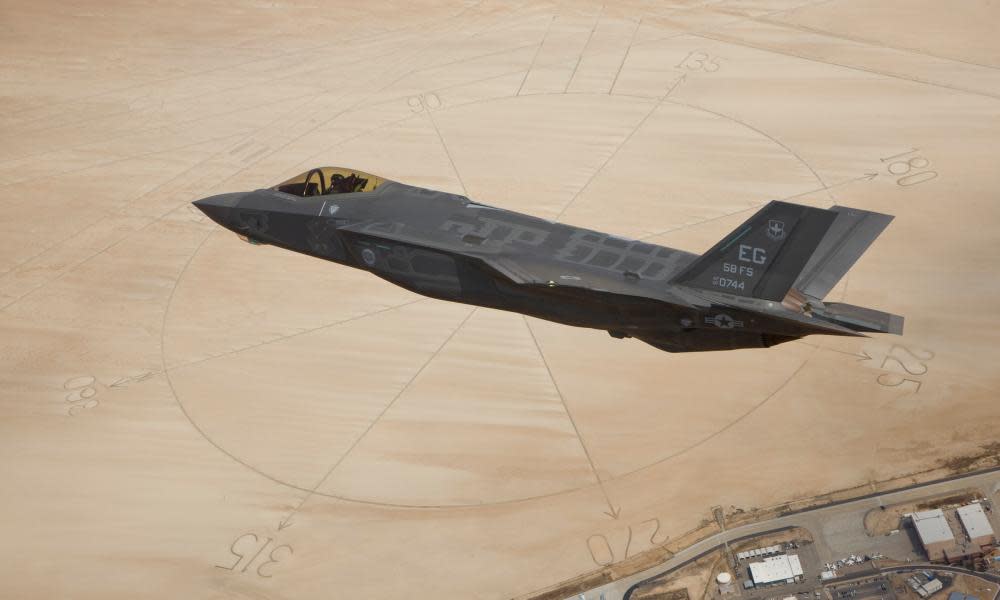First two F-35A fighter jets to arrive in Australia amid warning on cost

Australia will take delivery of its first two F-35A Joint Strike Fighters, with the aircraft arriving at the Williamtown RAAF base on Monday.
The F-35A Joint Strike Fighter has been labelled the most advanced in the world but it has also been widely criticised for cost overruns and technical problems.
The commonwealth auditor general last week released a report into the $17bn procurement of the fighter jets, which found the total could be even higher and the cost of maintaining and operating the fleet was unknown.
“The developmental nature of the international JSF program means that Defence does not yet know the final purchase price of future Australian JSF aircraft, or their whole-of-life operating and support costs,” the report states.
“The history of defence acquisitions in Australia demonstrates that inadequate sustainment cost estimates at project approval have led to cost implications once the platform is in service.”
Defence has previously warned the government that support costs for the F-35 “remain high and the economies of scale were not yet evident”.
The report also found delays in the upgrading of airfields and warned of a shortage of spare parts.
Lockheed-Martin is building three models of the F-35 for the US military and 10 countries that have ordered them: Britain, Australia, Norway, Italy, Turkey, Denmark, the Netherlands, Israel, South Korea and Japan.
But the program, launched in 2001, has been dogged by huge cost overruns and technical problems that blew out its budget by nearly 70%. Britain slashed its orders, and the decision of the Howard government in 2002 to buy the jet fighter has been heavily criticised as hasty and ill-judged as cost increases, delays and doubts about its capability have mounted up.
Problems with the fighter jet have included issues with the radar software and increased risk of neck injury to lower-weight pilots when they ejected from the aircraft. The plane had not flown with an operational gun until August.
The first F-35s were due to fly with the US military in 2012, but did not enter service until four years later – and a total program cost that inflated from $233bn in 2001 to around $379bn. The RAAF is expected to have its first squadron of F-35s operational in 2020 with the delivery of about 30 aircraft.
The Australian government has budgeted $17bn for 72 of the aircraft. The former prime minister Malcolm Turnbull backed the spending when questioned last year.
“When we send our young men and women out to war, they have the tools to do the job to destroy their enemies and the terrorists,” he said.
The US president, Donald Trump, criticised the cost blowout shortly after his election and pledged to renegotiate the deal.
“The F-35 program and cost is out of control,” Trump tweeted in December 2016. “Billions of dollars can and will be saved on military (and other) purchases after January 20th.”
Trump later met with Lockheed-Martin executives who pledged to control cost overruns. The company now says the cost is expected to be driven down to $80m per plane by 2020.
The fighter jets have already seen active service with the US military in Afghanistan, and have been used by Israel to carry out airstrikes.
The F-35 is equipped with so-called stealth technology to evade radar, prompting Trump to describe the plane as “invisible”. In November last year, the US president told an audience of US coastguards: “You can’t see it. You literally can’t see it. It’s hard to fight a plane you can’t see.”
Trump said air force officials had told him: “Well, it wins every time because the enemy cannot see it, even if it’s right next to it, it can’t see it.”

 Yahoo News
Yahoo News 
